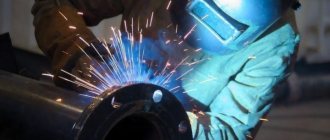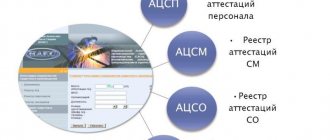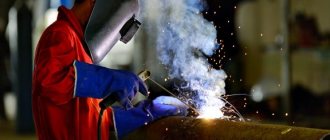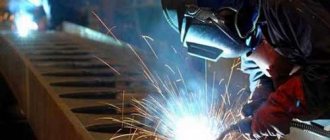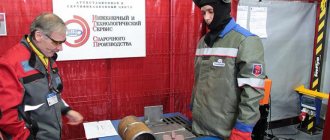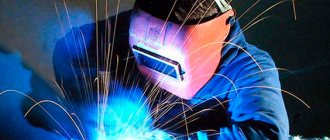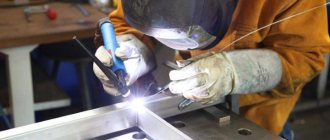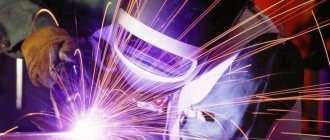Qualities and skills
The welding profession is considered very difficult.
Despite the fact that the state provides equal rights for both sexes, women rarely engage in welding work, since it is associated with high physical stress and a large number of harmful factors. Before being hired, whether in the housing and communal services sector or in a heavy industry enterprise, the applicant must undergo a medical examination, the results of which will determine his suitability for the vacant position. Modern requirements for physical condition are quite high - even minor health problems can cause refusal.
The welder must have the following qualities:
- perseverance and hard work;
- stable physical and psychological condition;
- no fear of heights;
- high level of visual perception;
- ability to be in an uncomfortable position for a long time;
- accuracy and self-demandingness.
The above qualities are very important, because the working conditions are not comfortable: welding is performed at any time of the year and at different heights without the possibility of a convenient location.
Average salary for a welder
The salary level depends on the rank, length of service, turnover of the enterprise and location of the company. In Moscow, salaries are the highest:
Salaries vary across regions:
It happens that salary depends on the number of hours worked. The rank then affects the hourly rate. In the case of piecework wages, the grade affects the cost of the joint and operation, so welders with a higher level receive more. They are trusted only with critical connections, and the rest are performed by welders with less qualifications.
Specialist tools and accessories
The list of working equipment depends on the welding mode . For example, when performing argon-arc work, it is necessary to use a cylinder with technical gas, including a shut-off valve with a conical thread and a pressure gauge to regulate the pressure.
In addition to argon workers, gas-electric welders and specialists who perform work in semi-automatic mode are associated with technical gas. The former use gas to heat the surface to a given temperature, and the latter use gas to protect the hot seam from interaction with the environment.
However, the most common type of connection is manual arc welding. To complete the work you will need the following accessories:
- Welding machine . Previously, only transformer-type units were used. They have been replaced by rectifiers and inverters, which have better technical characteristics.
- Electrode holder . The main parameter of the device is the maximum welding current. For household work, this figure will not exceed 200-250 A.
- Cable set . To connect the device to the power supply and transmit an electrical discharge from the current source to the electrode. The latter is subject to special requirements due to high loads during operation. As a rule, this is a copper cable with double insulation and a cross-sectional area of at least 25 mm2.
- Mask . Protects the worker's vision. In simple models, this function is performed by ordinary tinted glass. For professional work, a chameleon-type mask with protective light filters powered by batteries is used.
- Workwear . The welder's work clothes must be resistant to temperature changes so that splashes of molten metal cannot get on the skin. The same applies to shoes and protective gloves or mittens.
- Tools for finishing the seam : metal brushes, hammer and chisel.
Welding discharges
Upon completion of their studies at the college or courses, candidates pass theoretical and practical exams by a special commission. The welder is given a diploma indicating his profession and is assigned a certain rank. The level of complexity of the work performed, to which a specialist can be admitted, and the amount of wages depend on the rank.
Usually after college they graduate with the 3rd category, and those who are especially successful in mastering the profession - with the 4th. You can further increase your rank in production or in advanced training courses. There are 6 categories in total. Let's take a closer look at what each digit means in practice.
1st category
This rank is assigned to college students after the first year of study. Essentially, these are students who already know how to hold an electric arc and perform tack work, so they will be able to participate in the assembly of structures.
2nd category
An employee who has mastered his specialty, but not well enough, can be released from college with this rank. It is capable of welding in the lower and vertical positions, surfacing layers of metal for grooving, but is not allowed for connecting pipes through which liquids and steam flow. A second-class welder is able to weld a crater, a crack, and heat the metal before straightening. It is expected that he himself will be able to prepare cylinders for gas welding and set up an acetylene generator. Second-class welders are used in non-critical processes.
3rd category
The specialist must be able to weld vertical, corner, and T-seams using electric arc and gas welding, and hermetically connect pipes. A 3rd category welder understands welding equipment and is able to service and set it up himself. The employee is expected to be able to read blueprints. The welder is allowed to weld carbon steels and structures of medium complexity, but such a specialist will not be able to perform ceiling welding efficiently. When flame cutting, the welder must be able to maintain specified dimensions and apply preliminary markings.
Immediately after college, it is difficult to get a well-paid job with a 3rd category. Employers argue this by lack of practice. But after a couple of years of work, great prospects open up.
4-digit
The specialist is able to assemble parts and structures of medium complexity and conduct high-quality welding in all spatial positions. Can weld pipes hermetically at permanent joints (when it is impossible to rotate the pipe along its axis by 180 degrees to bring the lower part to the top). A 4th category welder can weld using electric, gas, or semi-automatic welding. Can connect cast iron, high-carbon steel, non-ferrous alloys, and is proficient in air arc gouging. Reading drawings of medium complexity is required here by default.
5th category
The specialist is able to weld low-carbon and high-carbon steels, alloy metals, non-ferrous metals in all spatial positions. Suitable for working with critical structures that will undergo high dynamic loads. Welds pipelines, inside of which there will subsequently be high pressure. Able to cut parts of complex shapes to precisely specified dimensions.
6th category
A welder of the highest category, who can do everything as the previous ones, is only able to work with experimental alloys, independently determining the welding method, current strength, type of gases and filler materials. The specialist knows how to cook under water, so he is allowed to repair pipelines and ships that operate in difficult specific conditions under high loads.
Difficulties of the work
The specifics of welding depend on the properties of the base metal and the spatial location of the seam . Materials have different thermal conductivity, which leaves its mark on the process of their connection. Violations of technology can lead to the following defects:
- cracks;
- chips;
- surges;
- cavities;
- burns;
- undercuts.
When working with load-bearing metal structures of critical construction projects, the above disadvantages are the reason for mechanical removal of the seam and requirements for re-joining. Some defects are identified by visual inspection of the solidified metal; for others, non-destructive testing methods are used that examine the internal structure of the welded area.
The responsibilities of the welder include the process of studying the structure of the seam upon completion of the work and eliminating all identified deficiencies.
Varieties
The welder profession is usually divided into the following types:
- welders on press welding machines;
- welders on diffuse welding installations;
- thermite welders;
- gas welders;
- welders on electron beam welding installations;
- electric and gas welders.
There are also 6 categories for welders, which are determined based on the professional skills of specialists and their skill.
Fire prevention measures
A by-product of the welding process, molten metal spatter, can cause a fire . According to the requirements of fire safety standards, the production site must have fire extinguishing equipment:
- fire extinguisher;
- buckets;
- shovels;
- sand.
Technical gases pose a high risk.
Acetylene, propane, hydrogen require special attention. Acetylene can ignite from the slightest spark, so generators for the synthesis of this gas are placed at a considerable distance from the work site. Propane leaks can also cause a fire. Hydrogen, when in contact with oxygen, forms an explosive mixture, since the process of water formation is accompanied by the release of a large amount of energy, which poses a great danger in the open air.
Semi-automatic welding is considered the safest joining method. The melt zone is protected by an inert gas, and the formation of a seam is accompanied by a minimal amount of splashes of molten metal.
Features of the profession
Who is a welder? A welder is a person with a working specialty. His activity involves working in welding production. This worker connects all kinds of metal structures, parts, products, containers and pipelines.
Therefore, the work of a welder must be very precise and professional. After all, the quality of work and welding seams depend on his professionalism. Even one mistake in the work of this specialist can lead to irreparable consequences.
To protect themselves and protect their face and eyes, welders must always follow safety precautions and use special masks with tinted lenses. This mask helps suppress the bright flames and sparks that workers have to deal with.
Our century is an era of new technologies, which is based on metal. It is used almost everywhere. Everyday life, industry, construction and many other areas need it.
Specialists in this industry are very valuable, because welding work will always be necessary.
Job description
Each enterprise that employs welders is required to develop special instructions regulating the hiring and activities of employees during work. The main document that must be followed when developing instructions is the professional standard approved by the Ministry of Labor and Social Protection. Let's consider the basic requirements for the profession in question.
Knowledge
In addition to professional skills, during the training process the welder receives the following knowledge:
- Design features of various welding equipment, as well as methods of servicing the main types of devices and rules for their safe operation.
- Physical and chemical properties of basic metals and alloys used in industry. This is necessary to select the optimal parameters of the welding unit to obtain a high-quality seam.
- Methods for preparing parts for joining, including edge removal.
- Have an understanding of corrosion processes and factors influencing its development.
- Types of welding joints and their scope.
- Temperature conditions of connection for base metals and alloys based on them.
- Methods for checking the quality of the finished connection.
- Methods for finishing seam cleaning.
Responsibilities
The range of functional responsibilities of a worker is limited by the job description, subject to its compliance with the requirements of current legislation.
The list of job responsibilities of a welder depends on the level of training. The main responsibilities of a welder are:
- Carrying out preparatory procedures before welding. At the end of the work, the welder is obliged to clean the seam from slag and perform finishing processing.
- Check the serviceability of entrusted equipment and maintain its functionality.
- All work is carried out in accordance with design and technical documentation. The welder is personally responsible for the quality and reliability of the connection made.
- If defects are identified, measures must be taken to eliminate them immediately.
- Pass periodic knowledge tests on labor protection and fire safety. Typically, the interval between inspections is one year.
- Undergo a medical examination within the time limits established by law.
- Comply with the internal regulations in force at the enterprise.
Rights of an electric welder for manual welding
In addition to the duties, the welder has rights, the list of which is established by the instructions:
- The main right is the opportunity to refuse to perform work in conditions that do not meet the requirements of regulatory documents on labor protection.
- Do not start work if faults are detected in the welding equipment.
- Require authorized persons of the enterprise to assist in the performance of immediate duties.
- Timely receipt of special clothing and personal protective equipment.
- Study documentation that is relevant to the performance of duties.
- Suggest ways to improve the production process.
- Increase your qualification level.
Responsibility
In some cases, the welder may be subject to disciplinary, administrative or criminal liability, depending on the type of violation:
- Improper performance of one's duties or performance of them not in full.
- Violations of internal labor regulations, safety regulations or labor protection requirements of the enterprise.
- Committing acts provided for by the administrative, civil or criminal code in force on the territory of the Russian Federation.
- Causing intentional damage to entrusted equipment.
- Disclosure of confidential company information.
Categories of welders
In addition to categories, welders differ in the categories of welding methods. Some types can be learned in college, others only at an enterprise where there is the appropriate equipment and conditions.
Press welding
A type of resistance welding that involves connecting the sides by squeezing them and passing current. Due to the increased resistance, the area is heated and the materials are mixed, forming a welding joint. The welder operates a machine with pliers, where he only regulates the location of the clamp and the duration of the current. In automatic machines, everything is done by the program and actuators, and the welder plays the role of an operator, setting the settings. High qualifications are not required here, since the equipment is responsible for many things.
Diffusion welding
Welding in a vacuum at elevated temperatures under low pressure. The process is carried out in special closed stands where a technical vacuum is formed. Again, the welder does not require high qualifications, since the machine performs many actions itself according to the entered settings.
Electron beam welding
It is used in the aviation industry, instrument making, and spacecraft manufacturing. Welding is carried out using the kinetic energy of electrons generated by an electron gun. The welding engineer must have a good understanding of the relationship between weld quality and endurance under future loads in order to adjust equipment accordingly. The process itself is completely automatic.
Thermite welding
The sides of the workpieces are heated and fused due to the combustion of powder - thermite. It is fed from a hopper into a refractory mold, having been previously melted. It is used when joining thick parts in hard-to-reach places (mainly repairing rails). It does not require high qualifications, since nothing depends on the welder’s manipulations.
Gas welding
It is carried out using a burner with acetylene-oxygen or propane-oxygen flame. The working gas is supplied from a cylinder or generator. The flame temperature is possible at 2800-3100 degrees. Welders engaged in gas welding are able to connect pipes, repair containers, and sheet structures in conditions where there is no access to electricity. The quality of the seam directly depends on the experience of the worker.
Electric welding
The most common method of electric arc welding. Divided into several types:
All of the above types of electric welding require the experience of a welder who, by manipulating the torch/holder, creates a high-quality seam.
Where can he work?
Welding is used everywhere. It has almost completely replaced other methods of joining metal parts. Therefore, welders are in demand in many industries: metallurgy, mechanical engineering, aircraft manufacturing, oil, gas and defense industries, housing and communal services, shipbuilding, agriculture, construction.
Welders will always find work in auto repair shops, artistic forging studios, gardening partnerships, and repair and installation shops of enterprises. As a part-time job, you can consider minor repairs for private individuals, especially in the summer.
What is the difference from a gas-electric welder?
Electric and gas welders are often called gas and electric welders, which causes confusion not only in conversation, but also in documents. Based on this, many are interested in how a gas-electric welder differs from an electric-gas welder and whether there are any differences at all.
Let's start with the main thing. An electric and gas welder and a gas and electric welder are two identical professions that differ only in name. There are no differences in responsibilities. However, it is safe to say that “electric and gas welder” is the only correct spelling of this word. Whereas “gas-electric welder” is simply its colloquial form, fixed in the minds.
At the moment, no resolution, order or classification officially contains such a profession as “gas-electric welder”. There is only one correct option - “electric and gas welder”.
It would seem, well, let there be different versions of one word, and let everyone speak as they feel comfortable. After all, a similar situation arose with the words “registration” and “registration”. However, using the wrong term when denoting a profession can lead to serious consequences.
There are many master electric and gas welders whose employment documents say “gas and electric welder”. Such a mistake can lead to the fact that the welder simply will not have the opportunity to retire early or receive other benefits, since the list of dangerous professions does not include the word “gas-electric welder.”
That is why it is so important to make sure that the position “electric and gas welder” is written in all your employment documents, and not “gas and electric welder”. Otherwise, you will have to solve this problem through the court, and this is a long and not the most pleasant process.
Also, do not confuse the profession of an electric gas welder with a gas welder and an electric welder. The professions of electric welder and gas welder have completely different responsibilities.
